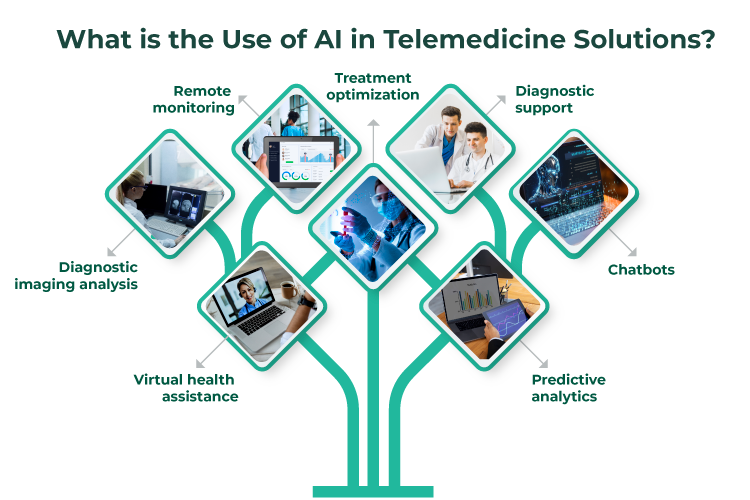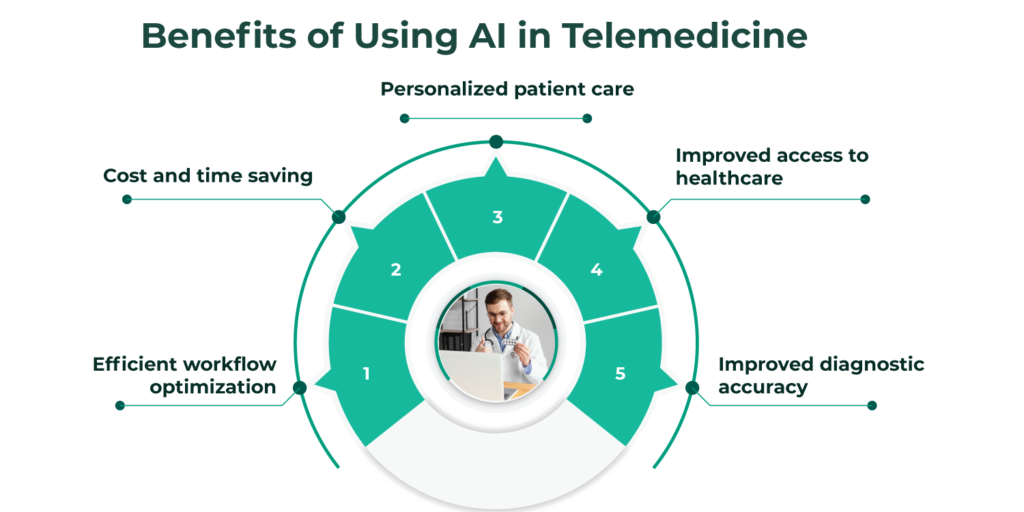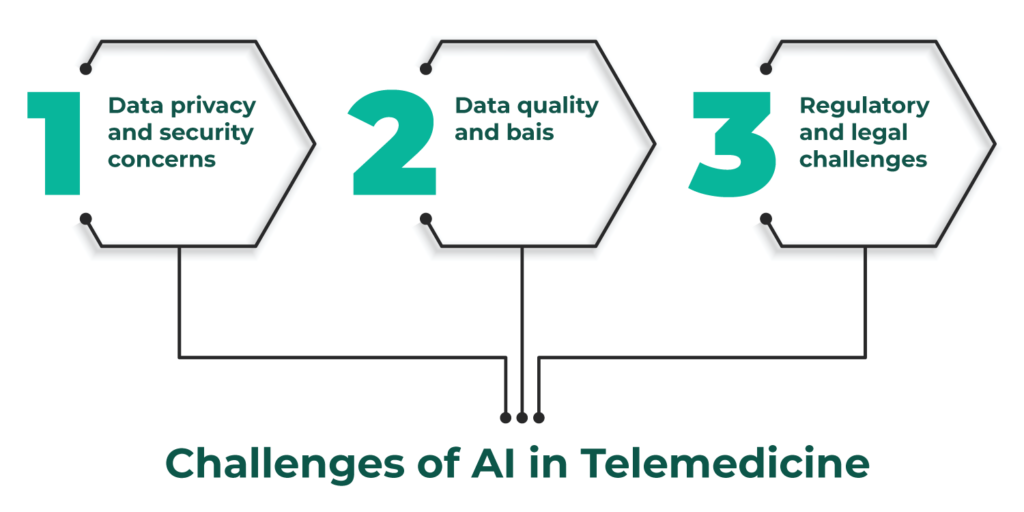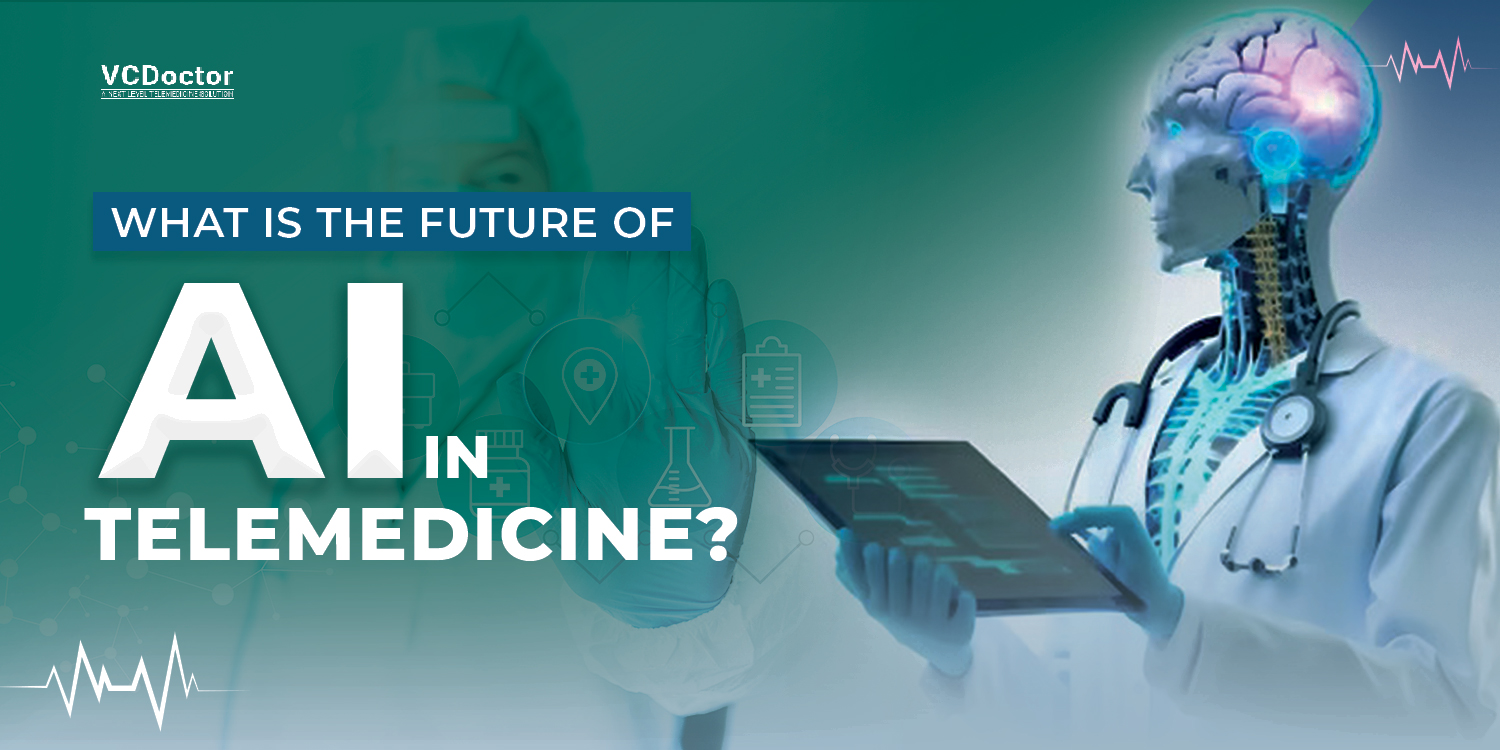What is the Future of AI in Telemedicine?
The pandemic brought a major revolution in the healthcare industry. Since everyone was locked, it increased the demand for Telemedicine. Now, implementing AI in Telemedicine provides healthcare services to patients more efficiently.
Earlier, doctors conducted personal consultations to provide healthcare services. Now, Telemedicine has shifted to digitalization. This makes it convenient for patients and doctors to connect virtually.
Telemedicine app is an AI-powered software. It allows healthcare experts to treat patients remotely due to its advanced features.
However, the future of AI in Telemedicine is still a question! Do you have similar thoughts?
This article features the future of AI in telemedicine. It also highlights its top benefits and future scope.
Table of Contents
- An Introduction To Telemedicine
- Role of AI in Telemedicine
- What is the Use of AI in Telemedicine Solutions?
- Benefits of AI in Telemedicine
- Challenges of AI in Telemedicine
- AI in Telemedicine Future
- How Can VCDoctor Help You with AI Adoption in Telemedicine?
- Wrapping Up!
- FAQs
- 1. What are the top features of telemedicine software?
- 2. Mention how is telemedicine different from telehealth
- 3. How are healthcare experts using telemedicine software?
- 4. Are there any challenges that patients experience due to telemedicine software?
- 5. Mention the telemedicine software development cost?
An Introduction To Telemedicine
Telemedicine is a software to deliver medical services remotely. Using this software, doctors can diagnose patients from the comfort of home. Based on the patient’s health condition, a tailored treatment plan is suggested. Video conferencing is an integral part of all of this as it allows doctors to closely examine patients via camera. Through video conferencing, doctors can virtually diagnose patients and understand their body language. There are several other benefits of Telemedicine software. This also reduces travel time and lowers medical costs. Hence, the future of telemedicine is bright and promising.
Role of AI in Telemedicine
AI in telemedicine optimizes resource allocation. They also predict potential health challenges. It is vital in telemedicine as it offers innovative solutions to streamline processes. It also enhances patient care. This integration has completely transformed the healthcare industry, making patient care more personalized and accessible.
Due to AI in telemedicine, geographical barriers are removed as personalized care is accessible to all. Patients can easily contact doctors using AI-driven telemedicine software for the best healthcare services.
The emergence of AI and telemedicine also allows for the rapid detection of potential health problems. In all, AI in telemedicine is a blessing in disguise as it is making healthcare services accessible in a way that they were never available. As a result, the international market size of AI technologies in the healthcare industry is expected to increase from $11 billion U.S. in 2021 to nearly $188 billion U.S. by 2030.
What is the Use of AI in Telemedicine Solutions?

1. Remote monitoring
Wearable gadgets and sensors combined with AI provide continuous remote monitoring of patient’s health indicators. Healthcare professionals may remotely monitor patients’ situations and take immediate action when needed thanks to these gadgets, which gather real-time data on vital signs, activity levels, and other pertinent parameters. Thus, the future of telehealth will highly influence the healthcare industry.
2. Diagnostic imaging analysis
In telemedicine, future AI in healthcare is designed to analyze medical images like CT Scans and X-rays, allowing healthcare experts to diagnose all conditions remotely. These analyze all underlying conditions, speeding up the diagnostic process.
3. Virtual health assistance
AI in telemedicine interacts with patients and discusses medical queries. They also offer personalized guidance and send reminders. Ultimately, it improves patient engagement, resulting in improved medical outcomes.
4. Predictive analytics
Large patient data sets are analyzed by AI systems to find trends and forecast health hazards. Using predictive analytics, telemedicine future solutions can stratify patients according to their risk profiles. This allows for tailored preventative care regimens and proactive interventions. This method lowers healthcare expenses, enhances patient outcomes, and aids in the early identification of possible health problems.
5. Chatbots
Chatbots provide complete assistance to doctors in scheduling telehealth appointments. Additionally, they successfully answer queries on the portal. Using chatbots, doctors can check patients’ data easily.
6. Diagnostic support
Doctors and healthcare professionals have access to AI-powered diagnostic tools that enable precise remote diagnosis of medical disorders. To find any anomalies, machine learning algorithms thoroughly examine medical pictures from MRIs, CT scans, and X-rays. It allows the radiologist to find out more accurate results faster.
7. Treatment optimization
AI thoroughly examines patient medical histories and clinical guidelines in telemedicine to provide individualized treatment regimens. The patient’s medical history, genetic composition, lifestyle choices, and preferences all play a role in these suggestions. Moreover, tailored treatment programs are created to fulfill each patient’s requirements.
Benefits of AI in Telemedicine
Top benefits of AI in telemedicine includes:

1. Personalized patient care
The medical industry deals with huge chunks of data every day. Due to the vast amount of data, the chances of errors exist. As a result, patients fail to get accurate medical services. AI algorithms have access to your medical history and lifestyle pattern already. It allows them to make informed decisions that improve patient satisfaction.
2. Improved access to healthcare
AI in telemedicine has no geographical barriers. Thus, the best healthcare services are accessible to all! This improves access to healthcare services. It is especially beneficial for unreserved and rural areas. In case of telemedicine urgent care, this softwares comes handy.
3. Improved diagnostic accuracy
In the healthcare industry, mistakes can occur anytime and anywhere. This increases the chances of patient complications. With AI in telemedicine, doctors can make accurate diagnoses through deep learning techniques. AI closely reads patients’ data and improves patient outcomes.
4. Cost and time saving
Telemedicine software saves a lot of time as it eliminates the need for personal visits. Additionally, you can get answers to your queries online. Further, there is no need for repetitive diagnostic tests, making healthcare cost-friendly.
5. Efficient workflow optimization
Artificial intelligence improves operational efficiency and resource usage in telemedicine today systems by streamlining clinical workflows and administrative chores. AI-powered systems streamline healthcare services delivery. Above all, they allow doctors to focus on patients’ health improvement.
Challenges of AI in Telemedicine
Here are some common challenges of artificial intelligence in telemedicine:

1. Data privacy and security concerns
Telemedicine platforms deal with sensitive patients’ medical records. Maintaining the privacy of this information is important to maintain patients’ trust. However, certain AI systems are not designed with the best security measures. This increases the chances of data breaching. To avoid this, choose a service provider following regulatory requirements such as HIPAA.
2. Data quality and bais
Large datasets are an integral part of the healthcare sector. Any discrepancy or bias in the data results in inaccurate predictions. It can hamper the entire diagnosis and treatment procedure. Therefore, it is vital to check that the data is correct. Excellent data quality must be guaranteed to reduce bias in AI-driven telemedicine solutions.
3. Regulatory and legal challenges
Regulations and legal requirements for telemedicine practices may differ throughout jurisdictions. Incorporating artificial intelligence (AI) into telemedicine poses intricate legal and regulatory issues concerning medical standard compliance, liability, licensure, and payment. Tech developers and healthcare practitioners must navigate these regulatory environments to guarantee AI’s moral and right application in telemedicine.
AI in Telemedicine Future
AI can effectively transform the telemedicine sector to improve diagnostic precision. It facilitates remote monitoring. Through telemedicine, remote medical care has become more accessible. It has numerous advantages, like making healthcare easier to access. Other benefits include providing immediate medical attention and easing financial burdens.
According to experts, AI has the power to reduce healthcare inefficiencies. Many AIs in healthcare can improve patients’ experience and overall workflow. Although AI is complex in telemedicine; however, with proper advancements, these challenges can be tackled easily. Thus, it can be concluded that the future of AI in healthcare is exceptional.
How Can VCDoctor Help You with AI Adoption in Telemedicine?
VCDoctor is the AI-First healthcare solution provider. Our experts here build custom telemedicine solutions that allow doctors, hospitals and healthcare providers a platform to conduct accurate diagnoses with remote accessibility. The platform is designed to offer patient-centered care with unique features that bridge the gap. Through VCDoctor’s white-label telemedicine solution, it is easier to avoid long-queues. Additionally, you’ll get a free consultation from the comfort of your home. So, what’s the wait for? Get in touch with us for a quotation today!
Looking for a White Label Telehealth Platform?
Wrapping Up!
AI in telemedicine in the healthcare industry has captured the center stage! As a result, most healthcare experts and clinics are incorporating AI-enabled telemedicine softwares. Using these softwares, patients get excellent healthcare services in the comfort of your home. Although these telemedicine softwares might not substitute the traditional healthcare system, it has made its way into everyone’s life. If you’re looking for expert solutions, contact us today!
FAQs
1. What are the top features of telemedicine software?
In telemedicine software, multiple features make it easier for patients and doctors to interact easily. Out of all, real-time communication and appointment scheduling are the two most important. It also has features like prescription management, video conferencing for remote consultation, security patient data storage, and others. All these features enhance the software’s credibility.
2. Mention how is telemedicine different from telehealth
Both these terms are sometimes used interchangeably. However, both have a slight difference. Telemedicine refers to remote medical services. However, telehealth is a border term that covers both remote non-clinical and medical services.
3. How are healthcare experts using telemedicine software?
Today, telemedicine software is used widely by healthcare experts. On the software, you get complete information about patients. Additionally, patients can easily schedule appointments and meet healthcare providers virtually. During the consultation, a video conferencing feature is used for detailed diagnosis and real-time communication. This makes healthcare services accessible to all.
4. Are there any challenges that patients experience due to telemedicine software?
Yes, while using the telemedicine software, patients experience certain challenges. Out of all, one major challenge is the inability to use the software. You must have a proper understanding of using AI enabled telemedicine softwares. Additionally, you should have a stable internet connection so that the consultation can take place smoothly. Additionally, you have an excellent mic and a webcam.
5. Mention the telemedicine software development cost?
The total cost completely depends on the service provider. If you choose advanced features, the cost will increase.




